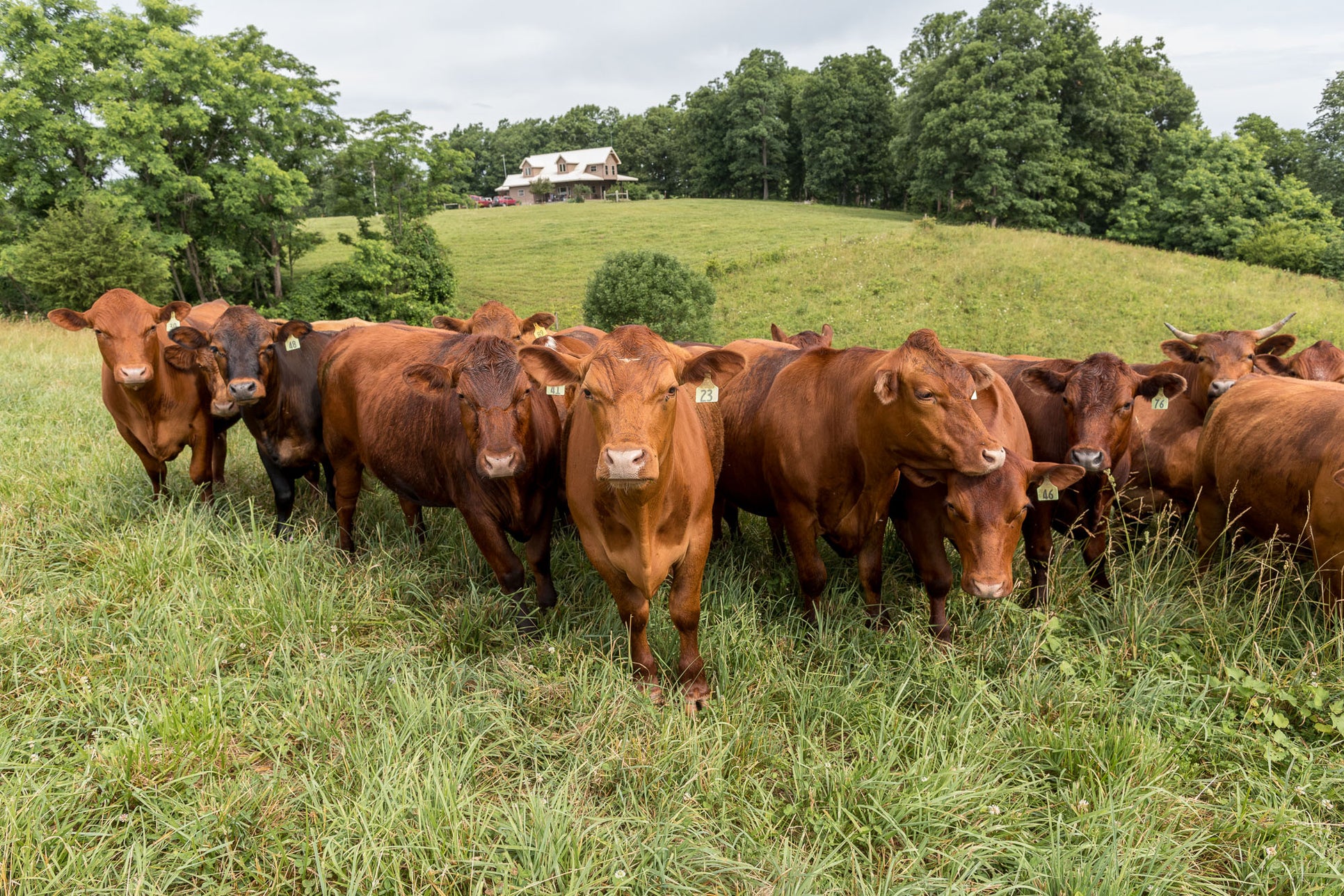Grass Roots Farmers Help Slow Global Warming

Many conscientious consumers forego meat eating because livestock production has a reputation for being terrible for the environment. And it’s true—industrial agriculture is one of the world largest contributors of greenhouse gases.
This article, and others like it, point to research that shows, “the three biggest meat companies…are estimated to have emitted more greenhouse gases last year than all of France and nearly as much as some of the biggest oil companies.” But the impact of small-scale, regenerative farms is much, much different. Instead of polluting the earth, they are cleaning it. Instead of depleting resources, they are feeding both land and their communities in healthy ways.
It’s not hype—there’s hard evidence that Grass Roots’ land management techniques aren’t just sustainable, they actually improve the environment.
Soil samples pulled from Grass Roots pastures in 2014 and again in 2018 show a 1% increase in organic matter—which proves that carbon is being sequestered on our farms. This process—reducing atmospheric carbon by pulling it from the air and into the soil—has been shown to slow global warming and mitigate climate change. In fact, the impact of regenerative agriculture is so effective that many governments—including those in the U.K., France, Australia, and California—are incentivising carbon farming in an effort to meet their goals for emission reductions.
Obviously we’re thrilled about this big-picture impact. One of the primary missions of our cooperative is to improve the health of the planet, and reducing greenhouse gases in the atmosphere certainly does that. But these soil test results are also a significant indicator of the health of our individual farms and the mindful eaters they feed.
Increased organic matter is a measure of the fitness of the soil, which is critical to the vitality of pasture-based farming systems. When you raise livestock outdoors, you rely on the forage that land produces to nourish your animals. Keeping the proper mineral balance necessary to promote a fertile biome requires that your soil be in tip-top shape. And in the Ozark hills, where soil is traditionally rocky and deficient in lime and magnesium, 1% growth is pretty remarkable.
How do we keep our soil healthy? By sticking to farming practices proven to be regenerative.
- We never use pesticides—which strip the land of microorganisms.
- We use no-till planting techniques—which keep root systems in tact.
- We plant a variety of grasses—including sorghum—which has deep roots systems that help build organic matter. This biodiversity benefits the ecosystem and ensures that our animals have a well-balanced diet.
- We rotationally graze our animals. The cattle and chickens forage and fertilize in a symbiotic relationship that contributes to the productivity of the soil. They are moved over the land in strategic patterns—which include periods of intense multi-species grazing followed by long periods of rest. This process enhances fertility and ensures the land is not overworked.
Grass Root’s founding farmers developed our livestock standards—a rulebook, so to speak—that details exactly how the land and animals are cared for on every farm in the cooperative. Membership is contingent upon adhering to these policies, and this alignment allows the cooperative to guarantee a unified vision and a consistent product.
From day one, our farmers have set out to produce thoughtful food, guided by the belief that agriculture should improve the quality of the land and the lives of the people in a food system. Bettering the earth is a critical aspect of our mission, and our standards were developed based on techniques that do just that. Now we have hard evidence that all our farmers’ hard work is paying off.
This test, conducted by agronomist Neil Kinsey of Kinsey Agricultural Services, proves that Grass Roots farms are building soil—the primary indicator of productive, healthy land. Increasing organic matter is the fundamental goal of regenerative farmers, particularly those interested in offsetting climate change. And we are just tickled pink at this progress. 2013-2018 Turkey Field Soil Test Comparison
So, what’s the impact of increased organic matter in the soil? Here are just a few of the positive effects.
- The land can hold more water—16,000 to 20,000 more gallons per acre with a 1% increase in organic matter—which means less runoff.
- Fewer minerals are leached—resulting in mineral-dense soil. And when the soil that an animals grazes on is full of minerals, that animal’s meat is, too.
- A carbon sink is created—carbon dioxide is actually pulled from the atmosphere and stored in the ground. Instead of contributing to climate change, the carbon is now a productive part of the farm ecosystem, contributing to the health of the grass and the animals who feed on it.
Grass Roots farmers are building soil, bettering the environment, and making it possible for consumers to eat meat produced using methods that improve the earth, not destroy it. We hope you’ll join us in our mission to reform food systems and make meat eating responsible again. Vet your food sources. Be selective. And support the farmers—members of Grass Roots or other farmers you know and trust—working to make the planet healthier.
Recent Posts






